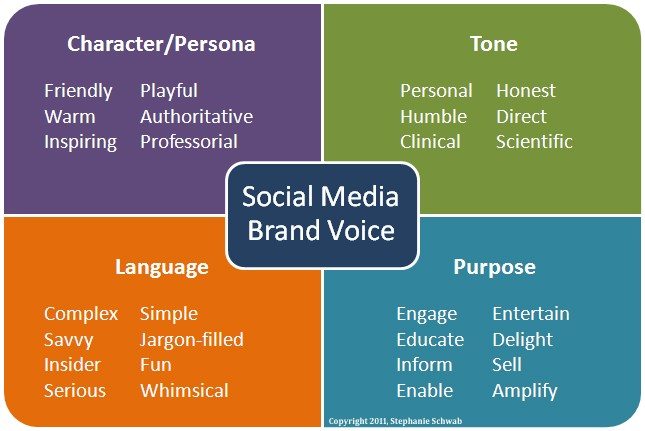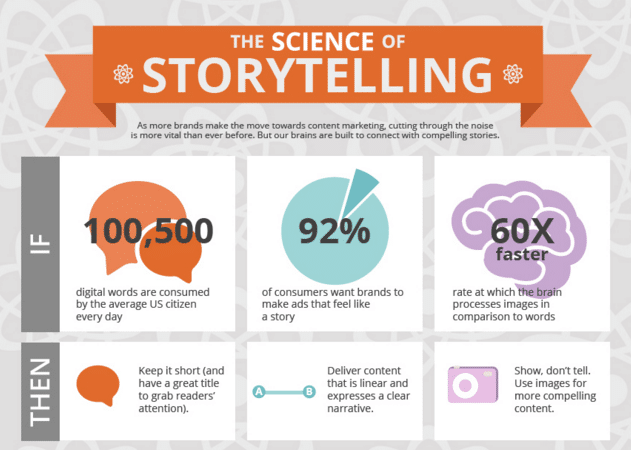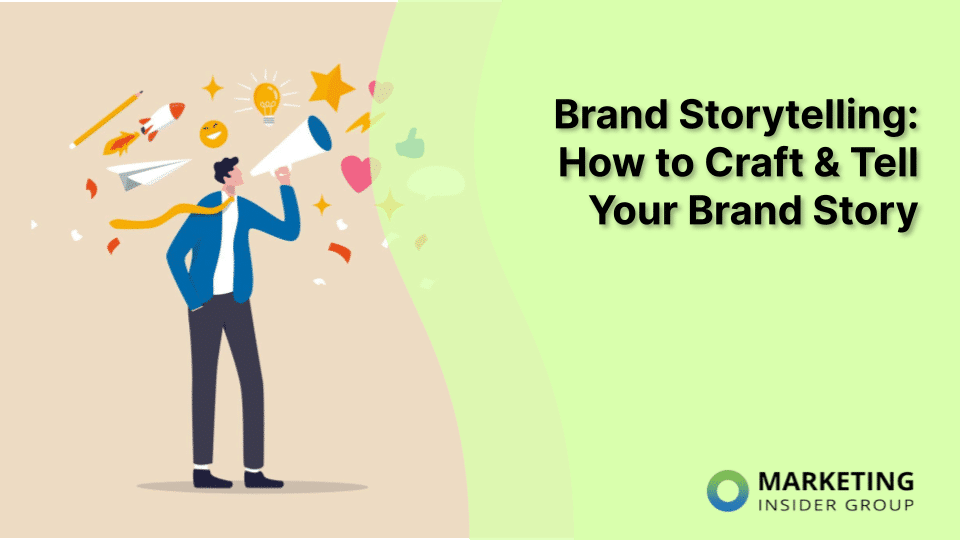
How to Humanize Your Brand with Authentic Content
Marketing success boils down to one thing: your audience’s trust. When you humanize your brand with authentic content, you can build the kind of trust that makes your company the go-to authority in its field.
Gone are the days when a catchy commercial was all a brand needed to win a consumer’s business. In fact, even in the glory days of Madison Avenue, the most successful agencies published authentic content that informed and humanized even as it entertained.
Creating authentic content is potentially one of the most valuable skills for marketers to learn today. Consumer trust in brands and advertising is at an all-time low. Earning back that trust is one surefire way to win more business in an increasingly skeptical world. Your brand doesn’t need a David Ogilvy or Phyllis Robinson to give it a human touch. Just follow their lead with authentic content that gives your brand a human face.
According to the Edelman Trust Barometer, globally only 56% of people trust businesses and 47% trust the media to do what’s right. On the positive side, individual trust in their employer has increased dramatically. 75% of those surveyed said they trust their employer. Engagement in news and content has also increased, with 72% of people consuming news weekly and sharing content several times a month.
Brands can use these trends to their advantage not only by creating and sharing more content, but also by involving their employees in content marketing efforts for better authenticity and improved trust.
Content marketing has its roots in authenticity as consumers are losing trust in traditional advertising and marketing methods. More businesses are starting to use content as a major marketing channel. But consumer fatigue for superficial content marketing increasing; the trust is starting to wane here as well.
So how can you improve your content marketing in this atmosphere of skepticism and distrust? Is it really possible to create truly authentic content without giving away your business secrets and losing your personal privacy?
Quick Takeaways:
- Authenticity is essential for building trust with your audience and creating better content.
- To give your audience a customized experience, give your content a human face.
- Use customer personas to tailor your content to every segment in your audience.
- You can be personable and relatable without getting personal or giving away your trade secrets.
- Put your audience first and the rest will follow.
Develop a Clear Brand Voice
The key to authentic content marketing is not only about what you say — but also about how you say it.
Finding your brand voice adds personality to your content and helps people to feel as if they’re engaging with a human when they consume your content. This is much different from just reading a dull article produced by a faceless corporation.
Think about your brand mission and values, as well as your audience, and what kind of voice would work best for your content. Are you informative and authoritative? Likeable and humorous? Fun and quirky?

Developing a clear brand voice not only helps you to be more consistent in your marketing, but also makes your content feel more authentic to the reader.
Create Original Content
Resist the temptation to churn out content cheaply and quickly by recycling content from other brands.
Mark Twain famously said, “There’s no such thing as a new idea!”
This is true in many respects (of course, all generalizations are false). It’s certainly challenging to come up with completely new concepts and ideas that haven’t already been explored and published by someone else.
It’s certainly okay to be inspired by a piece of content you’ve read elsewhere. But it will be obvious if you’ve simply re-written it without adding your own spin or any ideas of your own.
Base your content on original research, wherever possible, and make sure to use your own unique voice, thoughts, and opinions. A regurgitated piece of content will never feel authentic. And people will lose trust in your brand if you can’t demonstrate originality.
Write for People, Not Search Engines
One of the biggest benefits of content marketing is how powerful it is for boosting SEO. But beware of falling into the trap of producing content for SEO purposes only.
It’s painfully obvious when you’ve written an article purely as a vehicle to add keywords to your website. While this may result in a temporary boost in search engine rankings, the damage it does to your brand reputation. The relationship you have with your audience can be significantly damaged.
Keyword research can be a useful tool when used carefully. Finding out what questions your audience are asking can help you to create content that meets their needs. But never forget that you’re writing for a person, not a machine.
Your primary aim should be to provide value for your audience, and this will be rewarded with higher levels of trust. For the same reason you should avoid ‘clickbait” titles and too many sales messages. 90% of top-performing B2B content marketers prioritize their audience’s needs over their promotional messages, per a CMI article.
Focus on the People in Your Target Audience
In marketing, we *insiders* use words like “target audience” to describe people who are likely to need what you sell. But that term leaves out the human factor. When you focus on their humanity – their needs, hopes, dreams, and challenges – they stop being a “target” you need to hit and become valued partners in life’s journey.
What might seem odd at first glance is how cold, hard data can help you put a human face on those “targets.” Today’s data analysis technologies empower you to discover all the factors that make them an individual:
- Demographics: Age, gender, ethnicity, culture, income, type of employment, education level, and other characteristics all impact how people interact with your brand. Using your social media and content analytics to dig into your audience’s demographics helps you get to know your users much better.
- Online behavior: Knowing where your prospects go when they’re online helps you publish content at a time and place when they’re likely to read or watch it.
- Interests, likes, preferences, pain points, beliefs, and attitudes: Nothing reveals your audience members’ humanity more than these factors. While you can’t see them frown when they see an orphaned puppy or smile when they see a shiny new car, you can see what their reaction might be from their social media likes and interactions.
When you combine your audience discovery research with the information you glean from online interactions with your followers, you can come up with authentic content that will both delight them and meet their needs. Usually, your audience will shake out into a few distinct categories – audience segments.
For example, if you manufacture Western apparel, your audience segments might fall into several categories:
- Actual cowboys and cowgirls: Working ranchers and farmers who wear your apparel to protect them as they go about their work.
- Country and Western music fans: Fans often love their favorite music so much that they start to dress like the musicians who produce it.
- Competitors in horse shows and rodeos: People who ride Western style need clothing that will make them stand out in the show ring.
- Rural dwellers: Many people who dwell in the American West or the US heartland in rural communities still wear Western boots, hats, and other apparel that reflects their community’s rural roots while at home, even if they work in an uptown office.
- Urban cowboys: Rugged individualists, usually male, who live and work in the city but admire the macho pluck that characterized cowboys of old.
While these audience segments’ interests often overlap, their differences and unique goals give you better insights into what kind of content they would like to see from your brand. Creating buyer personas for each audience segment allows your creative teams to provide them with highly personalized experiences.
Customer personas are the final step in putting a human face on your content. Get creative and give them a name.
Then start creating content for them that is so tailored to their needs that they’ll wonder if you can read minds.
Build Your Content Around Stories
Life coach Lisa Nichols is one of the world’s most-requested motivational speakers. What makes her so successful? While her speaking style is certainly motivational, it’s her compelling story about escaping poverty that makes her so relatable and inspiring to others.
In fact, Nichols now teaches others how to use the power of storytelling to capture hearts and minds. She helps to make people “fall in love” with your products, ideas, and services.
Incorporating your own personal experiences and anecdotes into content is a tried and tested way to make it more authentic and compelling. Humans love stories, and we’ve used them for thousands of years to educate, inform and inspire.
We’ve all grown up hearing stories from childhood. And a juicy story told at the water cooler or bar can have a group hanging off every word. Humans are naturally curious creatures, and stories trigger this innate curiosity as well as helping us feel connected to others.

For a real-life example of how effective storytelling can be, just take a look at the book The Richest Man in Babylon – one of the most popular personal finance books of all time. Rather than setting out the advice simply as a series of steps, they’re interwoven into a series of stories and characters set in the ancient kingdom of Babylon.
Your stories don’t have to be personal ones. If you don’t want to give away your darkest secrets, it’s certainly not compulsory. But developing your writing technique to incorporate some storytelling into your content can make it more compelling to read and give it a more authentic tone. Be creative, and see what you can come up with!
Use Humor to Build Connections
Research shows that laughing in a social context causes your body to release endorphins, the “feel-good” hormones. Those feelings, a team of Finnish and British scientists discovered, build social bonds. And social bonds are precisely what you want your prospects and customers to have with your brand.
In fact, using humor was exactly what catapulted Mad Men-era ad woman Phyllis Robinson to the top of her game. Her legendary Polaroid commercials, featuring a couple of well-known actors, worked the product’s selling points into the actors’ playful banter.
Leverage Your Superpower with Employee-Generated Content
One secret the legends of advertising didn’t know was the power of employee-generated content. Studies show that content your employees produce can achieve eight times more engagement and seven times more conversions than your content teams’ meticulously researched posts.
Now don’t get me wrong. All your research, great writing, and video production can set the stage.
But employee-generated content builds trust. After all, you’re paid to produce content. But when a customer sees something a regular employee posts that agree with your “official” content, they’ll be more likely to believe it.
And, prospects will feel more comfortable asking your employees questions about your products and services. When you empower them to share their insights about how the stuff you sell can solve a prospect’s problem, your prospects will soon become customers.
Younger audiences are especially skeptical when it comes to believing marketing messages. If your target audience includes Gen Zers or millennials, employee-generated content is a must.
Add Authenticity with User-Generated Content
User-generated content (UGC) has to be the most genius idea marketers have ever thought up. For one thing, it’s absolutely free. In essence, you’re putting your customers to work on your content team without paying them a dime in return.
More importantly, just like with employee-generated content, it transforms casual browsers into true believers. When a customer takes the time to write a review, become one of your social media followers, or participate in a campaign, it says something about your products: they’re worth shouting about.
Again, it’s no surprise that younger, more skeptical audiences favor User Generated Content. When you add well-known influencers to your fan base, its value increases even more. Although you might have to fork over some cash – or at least some of your products – for an influencer’s imprimatur, it’s often well worth the investment.
Make Your Brand Stories into Heroes’ Journeys
Don’t the words “case study” just conjure up a picture of a yawnfest? Dry, boring, and full of industry jargon. But when you frame your customers’ success stories as heroes’ journeys, they transform into a Hollywood-worthy epic.
And even more importantly, they put the element of authenticity to work for you – especially when you include quotes or videos from your customers in them.
Also, content that shows how your company has overcome hardships and mistakes creates an instant bond between you and your customers..
Today’s customers don’t want a spotless knight to ride in and save the day.
They want to do business with a company that’s honest enough to admit that their armor has a few chinks in it.
Play the Long Game
Brands build trust over time. Positioning your company as a helpful source of information goes a long way toward developing the kind of trust that leads to long-term customer relationships.
Instead of publishing self-promotional content on social media, share tips, how-tos, and advice. When your followers ask questions or comment on your posts, interact with them. Not only will this strategy build confidence in your brand, but more importantly, your conversations can be a rich source of content ideas for blog posts, podcasts, videos, FAQ pages, white papers, and ebooks.
As your teams interact with your social media followers, they’re also building relationships. Studies show that the more you interact with prospects, the more likely they’ll be to buy your products and services.
If you are ready to get more traffic to your site with authentic, personalized content published consistently, check out our Content Builder Service. Or, set up a quick consultation, and I’ll send you a free PDF version of my books. Get started today–and generate more traffic and leads for your business!






